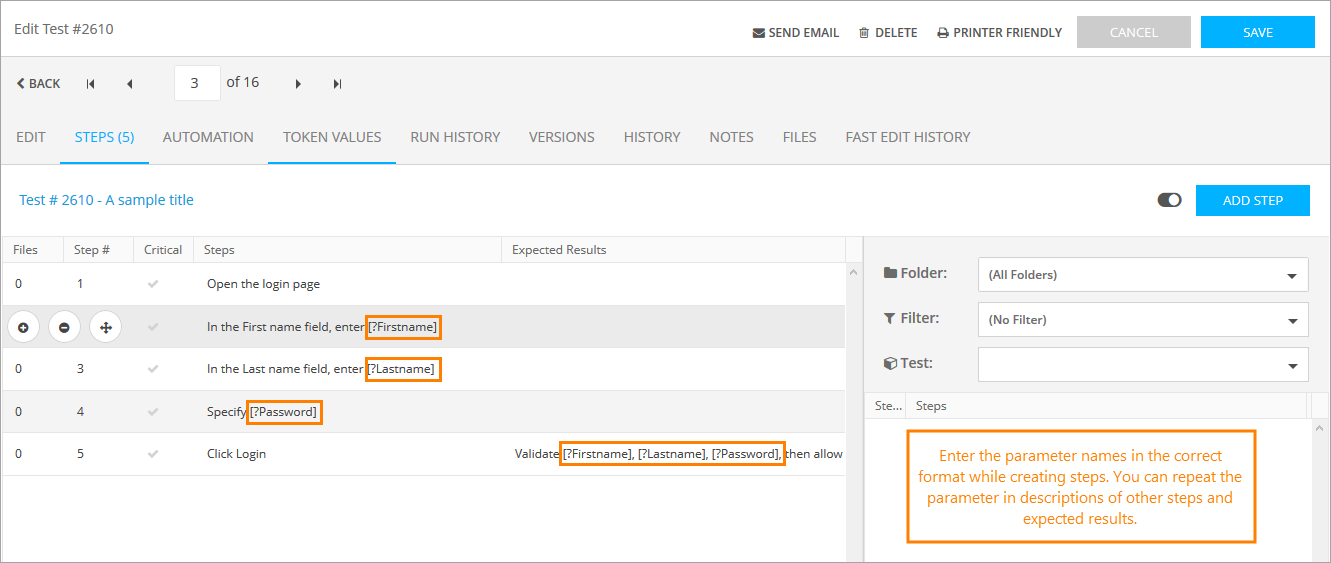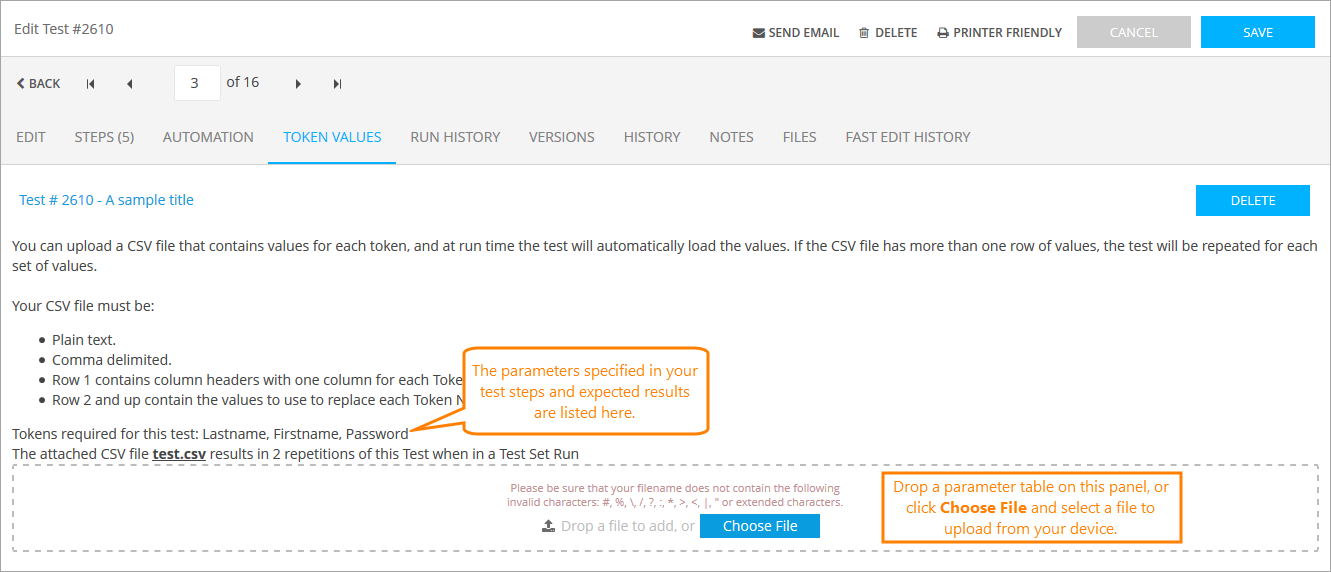If you have a manual test that needs to be repeated using different sets of values, you can parameterize it with tokens. By using distinctly formatted parameter names in steps and expected results, as well as in the attached CSV file of values, the Test Runner will build duplications of the test for each new set of values. You can use this feature to repeat the test multiple times with different parameters or input values.
 |
QAComplete does not support parameterizing for automated tests. This feature should be used with manual tests only. |
You can create up to 30 parameters (tokens) within a test. Each parameter will be replaced with a value from the attached CSV file. The CSV file must also be in a specific format, with parameter names in a header row and values in each column (see the example below).
Create Parameterized Test
To create a parameterized test:
-
Go to Test Management > Test Library.
-
Click Add New.
-
Specify the information about a new test.
-
On the Steps tab, add the needed steps, then enclose the name of your parameter in square brackets within the description of the step and in the Expected Result field. For example, if you want to create a parameter that represents first names of your users, it might look like this:
[?FirstName]
Parameter names can only contain valid alphanumeric characters and the underscore – that is, no symbols, spaces, extended, or special characters. -
Attach a plain text CSV file containing the values for your parameters to the test on the Token Values tab. These values will replace parameter names during the test run.
The CSV file must have a specific format:
- Plain text.
- All data enclosed in double quotes.
- Columns separated by commas.
- First row contains parameter names, without the square bracket and question mark.
- Second and subsequent rows contain the values that will replace the parameter names when running the test.

When uploading your CSV file, the upload verifies that there are no more than 30 parameter columns. If you try to upload a CSV file with more than 30 columns, you will receive an error. To download the file later, click its name that appears above the upload panel.
If you have mistakenly uploaded the wrong file, click Delete to remove it.
Note: You do not have to provide the token file. If there is no parameter value provided before the start of the test run, the Test Runner will simply display the parameter names, allowing you to specify values in action. -
Click Save to apply changes.
Example
You may need to use a series of first names, last names, and user passwords in your parameterized test. For that purpose, the following modifications for steps need to be applied:
-
In the step where a tester has to enter a specific first name, use
[?FirstName]as a parameter. -
In the step where a tester has to enter a specific last name, use
[?LastName]as a parameter. -
In the step where a tester has to enter a specific password, use
[?Password]as a parameter.
Next, on the Token Values tab, attach the CSV file containing the values you want to use during the test run:
"Ann", "Smith", "12345"
"Bob", "Brown", "b0b3&"
"Carol", "Crump", "C$@ll"
"David", "Downer", "12345"
Each value is enclosed in double quotes followed by a comma, there is a value for each parameter in each row, and the parameter names are enclosed in double quotes in the first row of the file.
Once the CSV file is uploaded, values from it will appear on the Token Values tab of the Edit Test form:
This allows you to ensure you have covered all the parameters of the test.
| Tip: | Click Save to apply the changes. |


